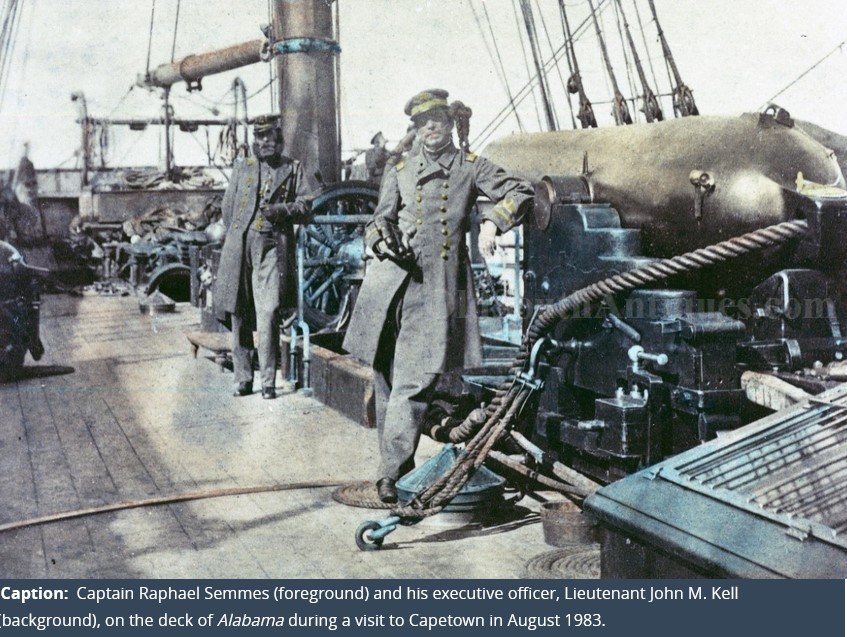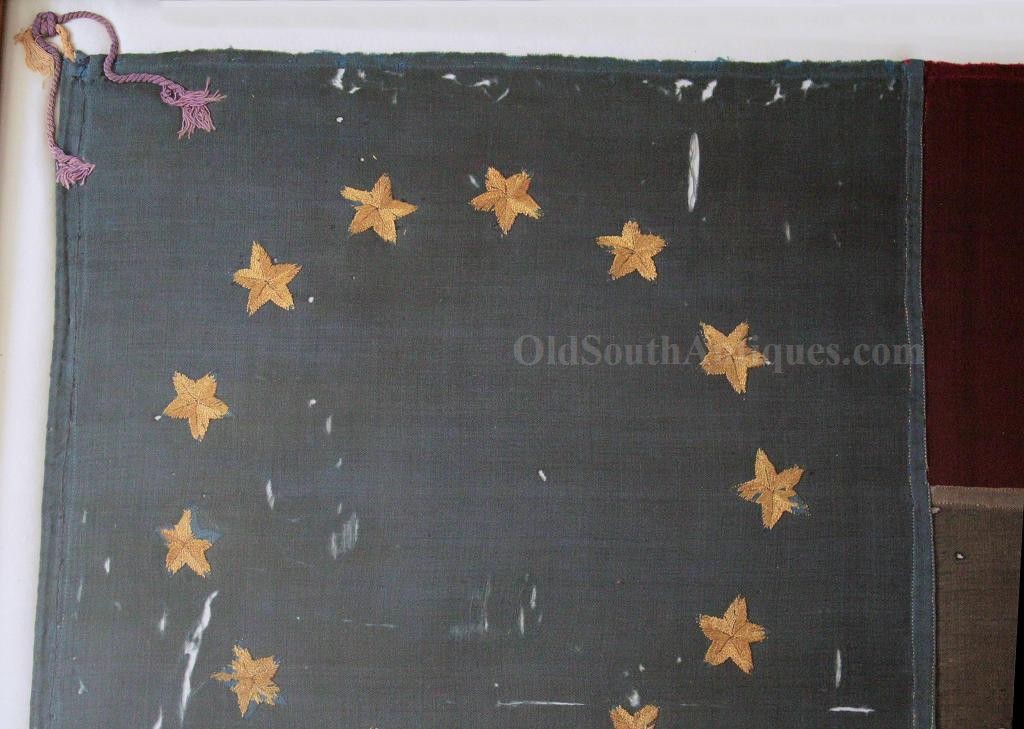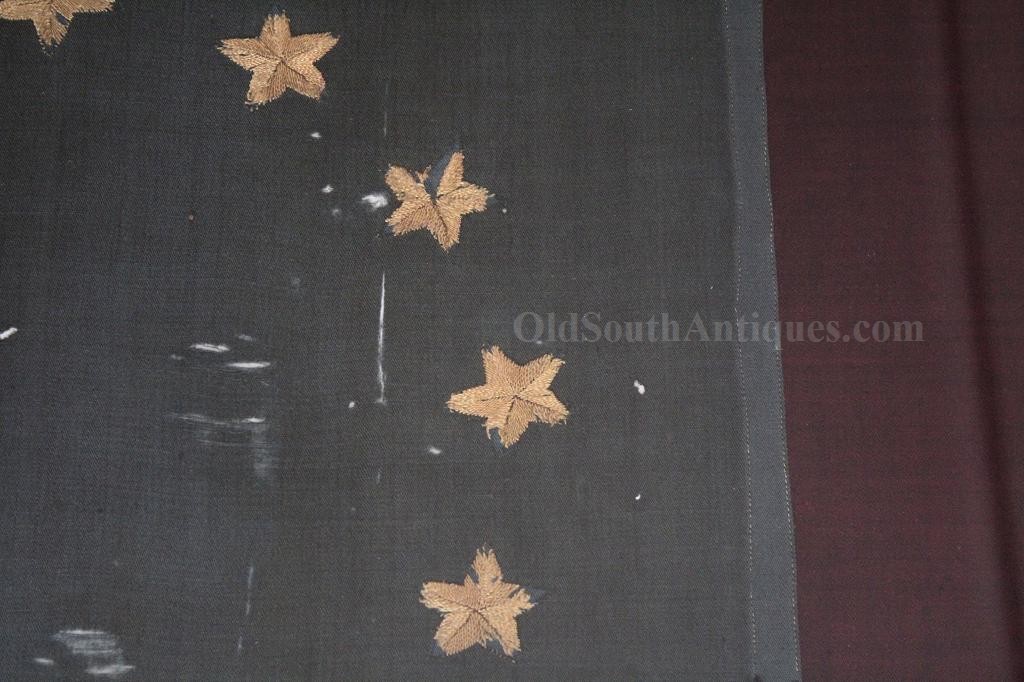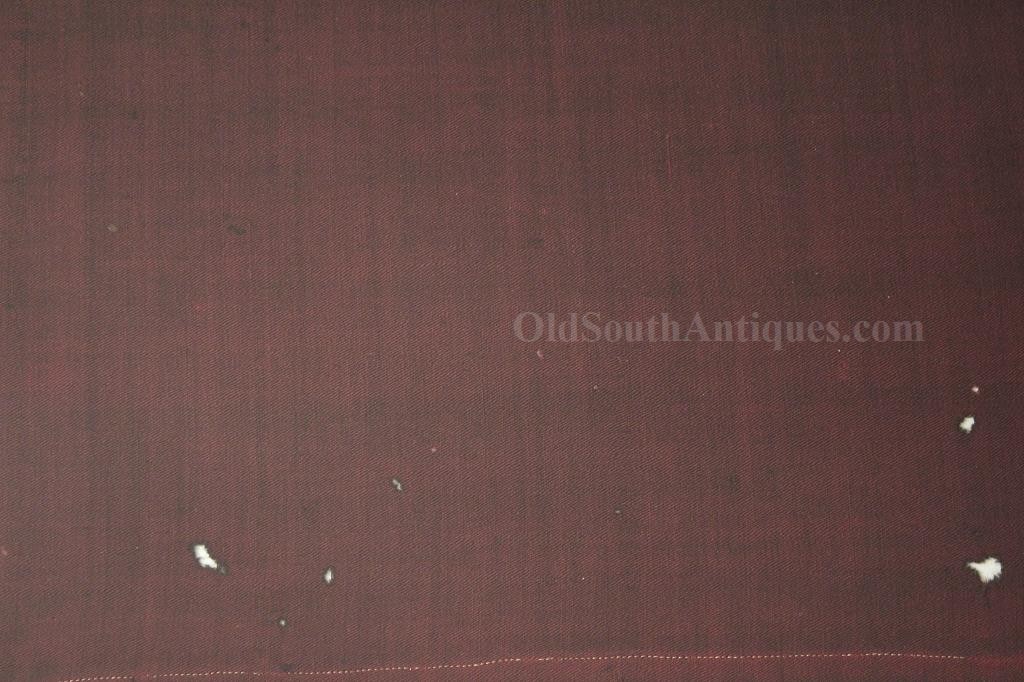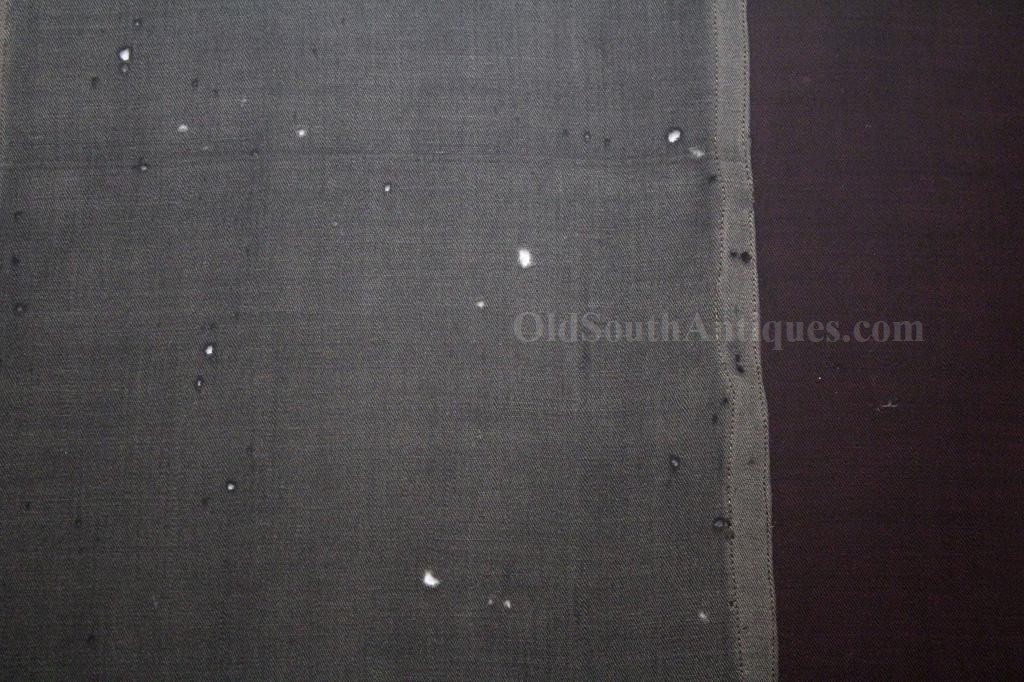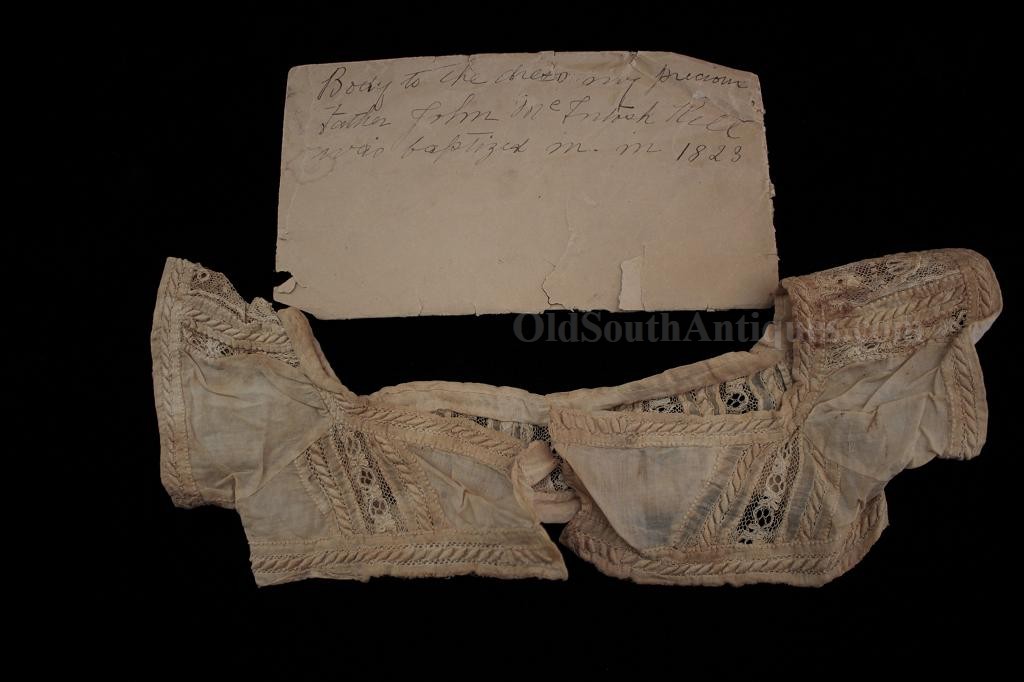
| Catalog | Past Items | Order Info | Terms/Conditions | About Us | Inventory Clearance |
Without doubt, the most famous Confederate ship was the CSS Alabama. There is no need for me to go into its extraordinary career here. The same can be said of its commander, Raphael Semmes. However, the Executive Officer on the Alabama, John McIntosh Kell is less known.
John McIntosh Kell was born in McIntosh County, Georgia in 1823, and entered the U.S. Navy in September 1841 as a Midshipman. Over the next two decades he served in several ships and was active in California during the war with Mexico and participated in Commodore Matthew C. Perry's expedition to Japan. When Georgia seceded from the Union in early 1861, Lieutenant Kell resigned from the United States' Navy. In April 1861, he briefly commanded the Georgia state gunboat Savannah, but received a Confederate States Navy commission as First Lieutenant the following month and was sent to New Orleans. There, he helped Commander Raphael Semmes fit out the cruiser CSS Sumter. He served as Executive Officer during her commerce raiding cruise in 1861-62.
Afterwards, First Lieutenant Kell was Semmes' Executive Officer on CSS Alabama throughout her career, and was present when she was sunk by USS Kearsarge in June 1864. He was rescued by the British yacht Dearhound and taken to England. Promoted to the rank of Commander in that month, he commanded the ironclad CSS Richmond in the James River Squadron in 1865. After the end of the Civil War, Kell returned to Georgia and became a farmer. In later years, he served as Adjutant General of Georgia. John McIntosh Kell died in 1900.
Semmes
and Kell not only worked together, but they were intimate friends of long
association prior to the War Between the States, and the friendship lasting
throughout their lifetimes. So close
were they that Admiral Semmes was Godfather to Kell’s eldest son, Raphael
Semmes Kell. (see image of Kell's baptismal dress, which goes with the flag. Numerous family letters and photos go with the flag also.)
Commander Kell had kept many souvenirs of his service, his travels, and his family. These items were sold as a body by Kells descendants. By far, the best artifact that he had saved was a flag from the CSS Alabama. Not the Alabama’s flag, but a boat flag, probably from the captains launch.
The flag measures 48.25 inches on the fly, by 28.65 on the hoist. The flag has been preserved and archivally framed by Textile Preservation Associates, Inc.
The flag is wool bunting and has a 11.5-inch circle of thirteen, 1.30-inch embroidered stars in the canton. The stars are hand embroidered with gold silk thread. The colors have held up well. The flag was attached by a roped hoist with purple streamers; purple by tradition symbolizing command.
It is in very good condition, but showing numerous coal cinder burns and coal smoke staining.
The following was written by Greg Biggs, and has been edited for brevity by Shannon Pritchard:
"Warships
in the 19th Century, and in modern times, carry a plethora of flags. The
largest is its battle ensign, flown from the stern of a warship while on the
high seas and in battle. This is typically the national colors of the country
the ship is serving. A smaller version of the ensign was the storm flag, flown
in bad weather. The jack was a smaller rectangular flag flown from the bow
flags staff but only while the warship was in port. For the U.S Navy, C.S Navy,
British Royal Navy (from which we draw our naval flags historically), this was
the canton of the national colors. For the launches and other smaller boats
carried by a large warship, a "boat flag” was used, flying from the small staff
attached to the rear of that boat. A set of signal flags (of the Rogers’
system) was also carried for silent communication between warships of a
squadron or fleet. A commissioning pennant was used, flown from the top of the
main mast of a sailing warship. This was a long and narrow flag that resembles
the national flag. Lastly, a set of foreign flags were also carried mainly for
saluting purposes but, in the case of a raider like the C.S.S. Alabama, for
disguise purposes. Semmes, on the cruise of the C.S.S. Sumter, flew a British
flag as he approached Union (and other) ships. Once his target had been
identified by its own flag or by hoisting a flag after being hailed, Semmes lowered
the British colors and hoisted a Confederate flag (in this case a First
National). Then a battle was engaged (if the other ship was Union) or captured
(if a Union commercial vessel).
Boat
flags
As the
flag in question is a boat flag, some explanation is needed to describe this
type of flag and its 19th Century American naval size via regulations.
As
stated, a boat flag was flown from the ship’s launches including cutters, gigs
and life boats. In the case of the captain’s gig, when used for taking the ship
commander to shore or another ship, the smaller version of the national flag
was hoisted from a small flag staff on the stern of the boat. This was only
done when the captain was on board. The rest of the small boats would only
hoist their boat flags only when the boat was in the water no matter who was on
board.
Initially, boat flags bore the same number of stars that the ensigns bore. With these smaller flags, the stars would have to be scaled small for them and thus hard to see at a distance. Between 1853 and 1857 in American naval tradition, boat flags bore sixteen stars, theorized by some as having to do with the rebirth of the U.S. Navy in 1798 when sixteen states formed the Union. Flag historian Dave Martucci, in researching 16 star flags from the 1850s, has noted that these flags were used by Republican Party concerns to show the sixteen free states of the Union. This, too, could be the source for the boat flags with this number of stars. The earliest known boat flag with sixteen stars dates to 1857.
However,
in 1862 U.S. Navy boat flag the number of stars were decreased to thirteen
probably in honor of the original thirteen colonies. This was later increased
back to sixteen stars and even more stars based on new regulations as time wore
on.
The U.S.
Navy boat flag seems to have begun use in 1818 but official regulations were
not set until 1854. These regulations set sizes for boat flags in the U.S. Navy
and declared that five types of these flags were mandated with fly lengths from
six to ten feet. These flags were not assigned by ship rating number.
The new
regulations of 1863 altered the sizes of flags and created fourteen ship
ratings from largest to smallest warships; boat flags were Ratings Ten through
Fourteen. These listed five flag sizes as boat flags using fly lengths of five,
six, seven, eight and ten feet and overall these were somewhat smaller than the
1854 regulations. Boat flags were often used by the small launches of higher
rated warships (like Ships of the Line, frigates, sloops of war, etc.) but were
also used as the ensigns for smaller vessels like tugs or small gunboats.
Like most
naval flags, these were typically made at the navy yard where a ship was home
ported. These yards contained all levels of ship supply from quartermaster,
ordnance, sails and repair, engines and repair, and more. Flags were typically
made at these yards from wool bunting purchased for that reason and were
sometimes stamped on the hoist edge with the naval base. Some surviving U.S.
Navy boat flags are also marked with the maker’s mark.
This is
the list of what were considered boat flags, ratings Ten through Fourteen,
which covers boat flags as found in the 1863 U.S. Navy Regulations:
Rating Ten – Hoist, 5.28 feet by Fly, 10 feet (approximately 65 inches by 120 inches)
Rating Eleven – Hoist, 4.20 feet by Fly, 8 feet (approximately 51 inches by 96 inches)
Rating Twelve – Hoist, 3.70 feet by Fly, 7 feet (approximately 44 inches by 84 inches)
Rating Thirteen – Hoist, 3.20 feet by Fly, 6 feet (approximately 41 inches by 72 inches)
Rating
Fourteen – Hoist, 2.50 feet by Fly, 5 feet (approximately 30 inches by 60
inches)
The first four ratings were more likely used for small warships, tugs, etc. while Rating Fourteen was closest to launches.
Confederate
Navy Flags – Ensigns and Boat Flags
The 1862
Regulations for the Navy of the Confederate States created only four ratings of
warships based on their sizes and crew. The Fourth Rating called for, "all
other vessels having established compliments not exceeding seventy-five
persons.” This indeed differs from the fourteen ratings used by the U.S. Navy.
They certainly had numerous smaller ships that did not qualify for even the
Fourth Rating. However, while not specified in these regulations, based on
surviving flags, the Confederates seemed to have retained the smaller boat
flags system of the U.S. Navy even if nothing has yet been found that puts
these flags into regulations. In all probability no such written regulations
covering these flags were ever written and the practice was simply carried over
from the U.S. Navy in which most Confederate Navy officers had served.
Confederate Navy yards followed the practice of making flags and more for the warships based there. Often, the naval flags were done under contract by local flag makers using English wool bunting initially captured at the former U.S. Navy yard in Gosport, Virginia (some 5200 yards captured). A stock of U.S. flags was also captured and probably repurposed into Confederate flags. As the wool bunting supply ran out, beginning in October 1861, wool bunting was brought in through the blockade. These flags tended to be well made and rather uniform in manufacturing techniques although on First National flags, the star counts and patterns often differed.
Adopted
on March 4, 1861, the First National flag was not only the first political flag
for the Confederacy but also its first battle flag. Both the army and navy used
this banner in combat. Consisting of a red bar, white bar and red bar plus a
blue canton bearing anywhere from seven to fifteen stars (depending on when it
was made – the star counts tying into the number of Confederate states or
states recognized), this flag, dubbed the "Stars and Bars,” was used on
warships as an ensign and boat flag. Its canton, in rectangular format, became
the First Naval Jack.
According
to the deck plans of the Alabama in historian Andrew Bowcock’s book, she
carried five small boats including the captain’s gig. Each of these would have
had a boat flag. These can be added to her ensigns, storm flags, signal flags
(of which none survive or have turned up so far assuming as a raider she even
used a set of such flags), commissioning pennants, etc”
Because
of the extreme quality of this flag and that it has an impeccable provenance of
having belonged the Executive Officer of the Alabama, John McIntosh Kell, I
believe this is the Captain’s launch flag or Kell’s personal flag, to be flown
when he used the Captain’s launch.
There is so much provenance with the flag that I will not attempt to document it all here, but will share with any potential purchaser.
Copyright © 2025 OldSouthAntiques.com All Rights Reserved.
Privacy Policy | Terms of Use
Powered by Web-Cat Copyright © 1996-2025 GrayCat Systems

